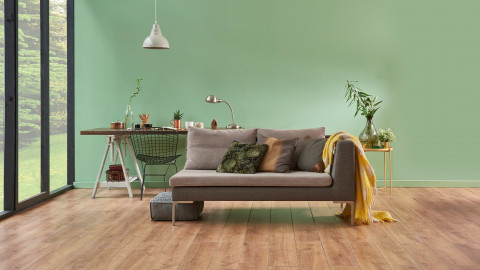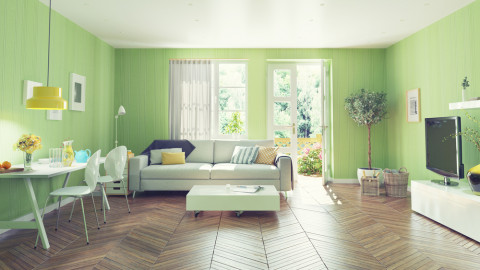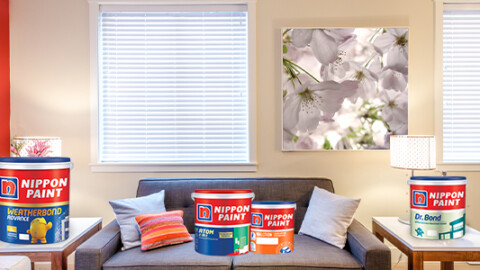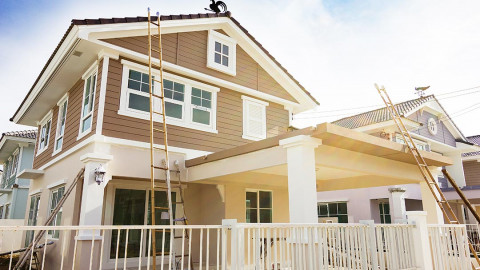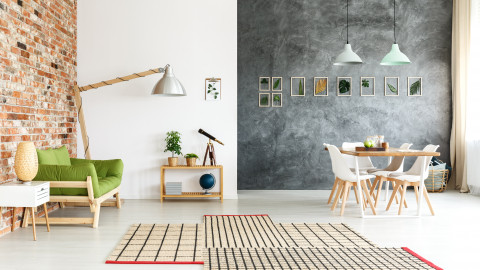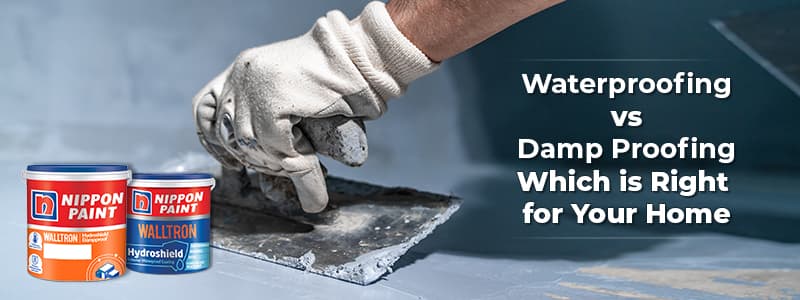
Seeing your dream home be ruined by water seepage or other types of water damage can be a tough thing to look at considering the blood and sweat that’s gone into making your home. So, what’s the solution? When it comes to protecting your home from moisture-related issues, two terms often come up: waterproofing and damp proofing. While these may sound similar, they serve different purposes and have distinct methods. In this comprehensive guide, we’ll explore the key differences between waterproofing and damp proofing, helping you make the right choice for your home’s foundation. We’ll also address some common questions and provide insights into why these processes are essential.
However, before we move on to understanding the differences between both, let’s take a look at what these terms mean.
What is damp proofing?
Damp proofing is like a protective shield for your home. It’s a set of techniques and materials used to keep moisture and water from seeping into the walls and floors of your house. This is important because when too much moisture gets inside, it can cause problems like mold, musty smells, and even damage to the structure of your home. Damp proofing keeps your place dry, clean, and safe, which is important for your comfort as well as the health of your home in the long run.
Understanding Damp Proofing
Damp proofing primarily addresses rising dampness, which occurs when water from the ground is drawn up through walls and floors via capillary action. Damp proofing is typically applied to the exterior walls of a structure, often during construction, to create a barrier that stops moisture from entering the building. It’s more about managing and redirecting moisture rather than making a structure entirely impervious to water.
Methods of Damp Proofing
The battle against moisture can be a long one. To fortify our homes against this unwanted intruder, here are several methods of damp proofing, including:
Damp Proof Course (DPC): This is a physical barrier, often made of materials like bitumen or plastic, installed in the walls or floors to prevent dampness from rising.
Waterproof Paints: Specially formulated waterproof paints like Nippon Paint’s Hydroshield Exterior can be used to protect the exterior walls from moisture. The Damp Proof Course (DPC) is often complemented with a layer of waterproof paint to provide an extra line of defense.
Cavity Walls: These have an inner and outer wall with a cavity in between. This design helps prevent moisture from transferring from the outside to the inside. The cavity wall can be filled with insulating material to enhance thermal performance.
Chemical Damp Proofing: Certain chemicals can be injected into walls to create a damp-proof barrier. This method is often used for older structures that lack a DPC.
Damp proofing is a valuable preventive measure, particularly in areas where rising dampness is a concern. By creating a barrier, it safeguards your home against moisture damage, mold, and structural issues.
Understanding The Significance of Waterproofing
Now that we’ve understood what damp proofing is, let’s take a look at waterproofing and how waterproofing differs from the above.
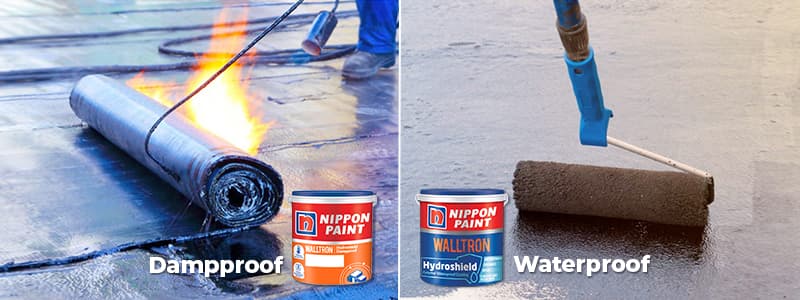
What is Waterproofing?
Waterproofing is like giving your home or building a superpower—it’s the process of making it resistant to water. Imagine a force field that keeps rain, leaks, or moisture from getting inside. This superhero-like protection is vital because when water sneaks in, it can create problems like mold, weakened structures, and other headaches. So, by waterproofing, we ensure that our spaces stay dry, strong, and durable, which is crucial for keeping them in tip-top shape for the long haul.
Why is waterproofing important?
Waterproofing is crucial for preventing water damage, preserving structural integrity, and avoiding issues like mold and energy inefficiency. It’s a cost-effective investment that ensures the longevity and protection of buildings, equipment, and assets. Compliance with regulations and peace of mind are additional benefits.
Methods of Waterproofing
There are various methods of waterproofing, depending on the area being protected. These methods include:
Liquid Waterproofing Membranes: These are applied as a liquid and form a protective, waterproof layer when they dry. These membranes are often used on roofs, balconies, and wet areas like bathrooms.
Cementitious Waterproofing: This method involves using a cement-based mixture to create a waterproof barrier on surfaces. It’s commonly used in areas that need protection from water infiltration, like swimming pools.
Bituminous Coating: Bitumen, a sticky and highly viscous liquid or semi-solid form of petroleum, is used to create a waterproof layer on surfaces. It’s frequently used for waterproofing roofs and basements.
Waterproofing Paints: High-quality waterproof paints, like those found in Nippon Paint products that are designed to provide protection and aesthetics. These paints are commonly used on exterior walls, decks, and balconies.
Waterproofing is crucial in areas where direct exposure to water and moisture is a constant threat. By creating a watertight barrier, it prevents water from seeping into the structure, thus protecting it from water damage, leaks, and mold growth.
Choosing the Right Solution
The choice between waterproofing and damp proofing depends on the specific needs of your home. Here are some considerations:
Moisture Level: If your home is in an area with a high water table or experiences frequent heavy rainfall, waterproofing might be more suitable.
Construction Stage: Damp proofing is often applied during the construction phase, while waterproofing can be done at any time.
Area of Application: Consider where you need moisture protection. Bathrooms, kitchens, and basements often require waterproofing, while damp proofing is more relevant for walls and floors.
Budget: Considering both options, Damp proofing proves to be generally more cost-effective than waterproofing. If budget constraints are a concern, damp proofing might be the preferred option.
Long-Term Goals: Waterproofing provides comprehensive protection and is ideal for long-term prevention. If you plan to stay in your home for many years, waterproofing your home is the wisest choice you can make.
The Role of Colors
Colors, even in these essential protective processes, play a role in both aesthetics and functionality. Nippon Paint India offer a range of products for their waterproof and damp proof coatings. While the primary purpose of these coatings is protection, choosing a color that complements your home’s exterior can enhance its visual appeal. After all, life’s always better off with a little dash of the right color.
For instance, when selecting a waterproof paint from Nippon Paint’s wide color range, you can choose from a variety of colors, including “Violet Veil” (Color Code: NP PB 1514 T), “Tidal Green” (Color Code: NP BGG 1633D), or “Strawberry Ice” (Color Code: NP R 1266 T). These colors not only protect your home but also add a touch of style.
In summary, Waterproofing and damp proofing are construction techniques that keep buildings safe from water-related trouble. Waterproofing is like giving a building a protective shield against water infiltration. It’s crucial to prevent issues like structural damage, mold, and energy inefficiency. On the other hand, damp proofing is about stopping moisture from creeping up through the ground or walls. Both techniques make sure buildings stay strong, dry, and comfortable. So, whether you’re a homeowner or a future builder, understanding these methods is vital for keeping spaces safe and long-lasting.
To conclude, understanding the difference between damp proofing and waterproofing is essential for protecting your home from moisture-related issues. Whether you opt for damp proofing or waterproofing, ensure your home is safeguarded from the damaging effects of moisture, so you can enjoy a safe and comfortable living environment.
FREQUENTLY ASKED QUESTIONS:
What do you mean by damp proofing?
Damp proofing is a process that prevents moisture, especially rising damp from the ground, from entering a building. It is typically used to manage and redirect moisture rather than make a structure entirely impervious to water.
What are the methods of damp proofing?
Damp proofing methods include installing a dampproof course (DPC), using waterproof paints, employing cavity walls to prevent rising damp, and utilizing chemical damp proofing.
Why is waterproofing or damp proofing essential?
Both waterproofing and damp proofing are essential to protect your home’s structure from moisture-related issues. Waterproofing is crucial in areas highly exposed to moisture, while damp proofing manages rising dampness in the walls and floors.
Are damp proofing and waterproofing the same process offering the same foundation protection?
No. While it is easy to get both these terms mixed up. Damp proofing and waterproofing serve different purposes. Damp proofing addresses rising dampness and moisture management while waterproofing creates a complete barrier against water infiltration.

